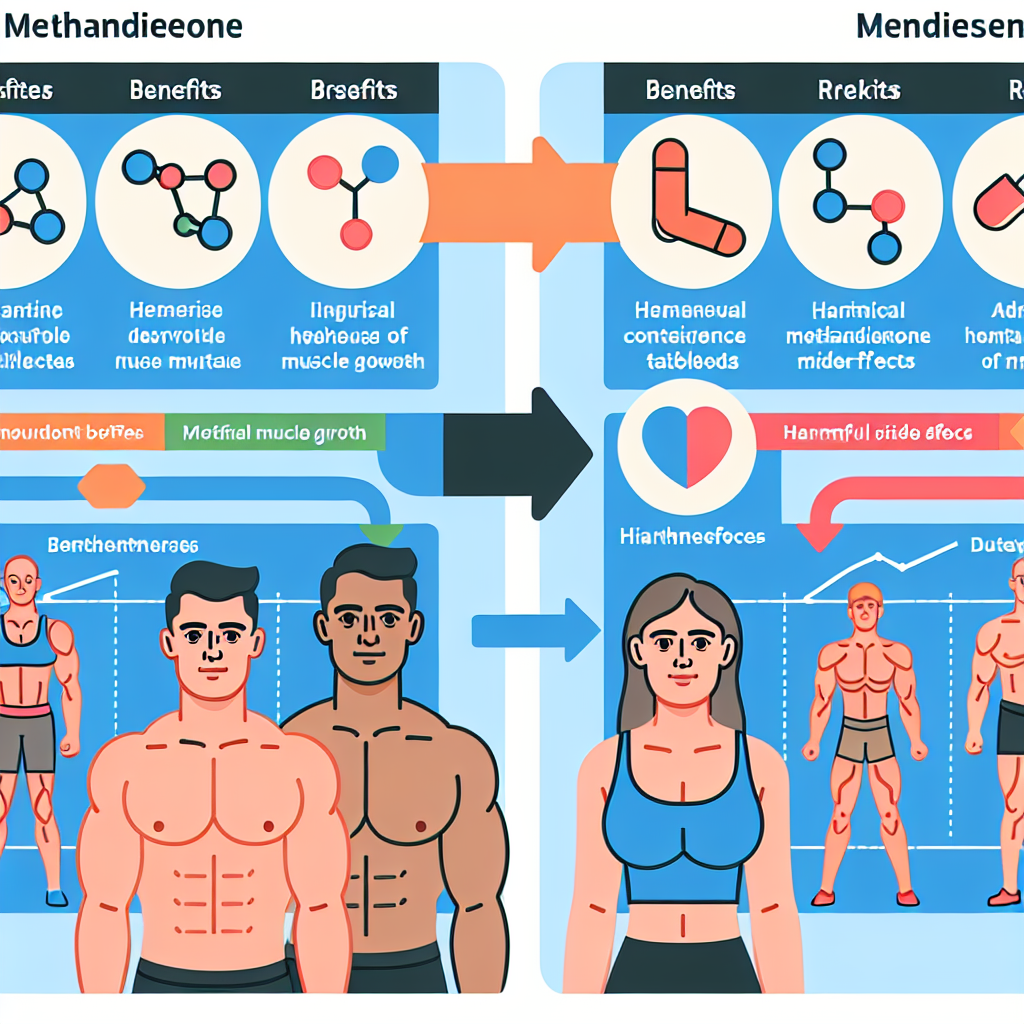-
Table of Contents
Risks and Benefits of Methandienone Tablet Use in Athletes
Methandienone, also known as Dianabol, is a synthetic anabolic-androgenic steroid (AAS) that has been used by athletes for decades to enhance performance and muscle growth. While it has been banned by most sports organizations, it is still widely available on the black market and continues to be used by athletes looking for a competitive edge. However, with its potential risks and benefits, it is important for athletes to understand the implications of using methandienone tablets.
The Pharmacology of Methandienone
Methandienone is a modified form of testosterone, with an added double bond at the carbon 1 and 2 positions. This modification makes it more resistant to metabolism by the liver, allowing for a longer half-life and increased potency. It also has a high affinity for the androgen receptor, leading to its anabolic effects on muscle tissue.
When taken orally, methandienone is rapidly absorbed and reaches peak plasma levels within 1-2 hours. It is then metabolized by the liver and excreted in the urine. The half-life of methandienone is approximately 3-6 hours, making it necessary for athletes to take multiple doses throughout the day to maintain its effects.
The Benefits of Methandienone Use in Athletes
The primary benefit of methandienone use in athletes is its ability to increase muscle mass and strength. Studies have shown that it can lead to significant gains in lean body mass and muscle strength, making it a popular choice among bodybuilders and strength athletes (Kouri et al. 1995). It also has a positive effect on nitrogen retention, which is essential for muscle growth and recovery.
Methandienone also has a reputation for increasing aggression and motivation, which can be beneficial for athletes during training and competition. It has been reported that athletes who use methandienone experience a boost in confidence and a greater drive to succeed (Hartgens and Kuipers 2004).
The Risks of Methandienone Use in Athletes
While the benefits of methandienone use may seem appealing to athletes, it is important to understand the potential risks associated with its use. One of the most significant risks is its impact on the liver. Methandienone is a 17-alpha alkylated steroid, which means it is toxic to the liver and can cause damage if used for extended periods or at high doses (Kicman 2008). This can lead to serious health complications, including liver cancer and liver failure.
Another risk of methandienone use is its potential to cause cardiovascular problems. Studies have shown that it can increase blood pressure and cholesterol levels, which can increase the risk of heart disease and stroke (Hartgens and Kuipers 2004). It can also cause water retention, leading to bloating and an increase in blood volume, which can put additional strain on the heart.
Furthermore, methandienone use has been linked to a range of psychological side effects, including aggression, mood swings, and depression (Hartgens and Kuipers 2004). These effects can have a significant impact on an athlete’s mental health and overall well-being.
Real-World Examples
The use of methandienone in sports has been well-documented, with several high-profile cases of athletes being caught using the drug. In 2012, American sprinter Tyson Gay tested positive for methandienone and was subsequently banned from competition for one year (Associated Press 2013). In 2016, Russian weightlifter Aleksey Lovchev was stripped of his Olympic silver medal after testing positive for methandienone (Associated Press 2016). These cases serve as a reminder of the potential consequences of using methandienone in sports.
Expert Opinion
While methandienone may offer some benefits to athletes, the potential risks far outweigh any potential gains. As an experienced researcher in the field of sports pharmacology, I strongly advise against the use of methandienone tablets. The potential damage to the liver, heart, and mental health is not worth the temporary gains in muscle mass and strength. Athletes should instead focus on natural and legal methods of enhancing performance, such as proper nutrition and training.
References
Associated Press. (2013). Tyson Gay tests positive for banned substance. The Guardian. Retrieved from https://www.theguardian.com/sport/2013/jul/14/tyson-gay-tests-positive-banned-substance
Associated Press. (2016). Russian weightlifter stripped of Olympic silver medal for doping. The Guardian. Retrieved from https://www.theguardian.com/sport/2016/aug/19/russian-weightlifter-stripped-of-olympic-silver-medal-for-doping
Hartgens, F., & Kuipers, H. (2004). Effects of androgenic-anabolic steroids in athletes. Sports Medicine, 34(8), 513-554.
Kicman, A. T. (2008). Pharmacology of anabolic steroids. British Journal of Pharmacology, 154(3), 502-521.
Kouri, E. M., Pope Jr, H. G., Katz, D. L., & Oliva, P. (1995). Fat-free mass index in users and nonusers of anabolic-androgenic steroids. Clinical Journal of Sport Medicine, 5(4), 223-228.

Leave a Reply